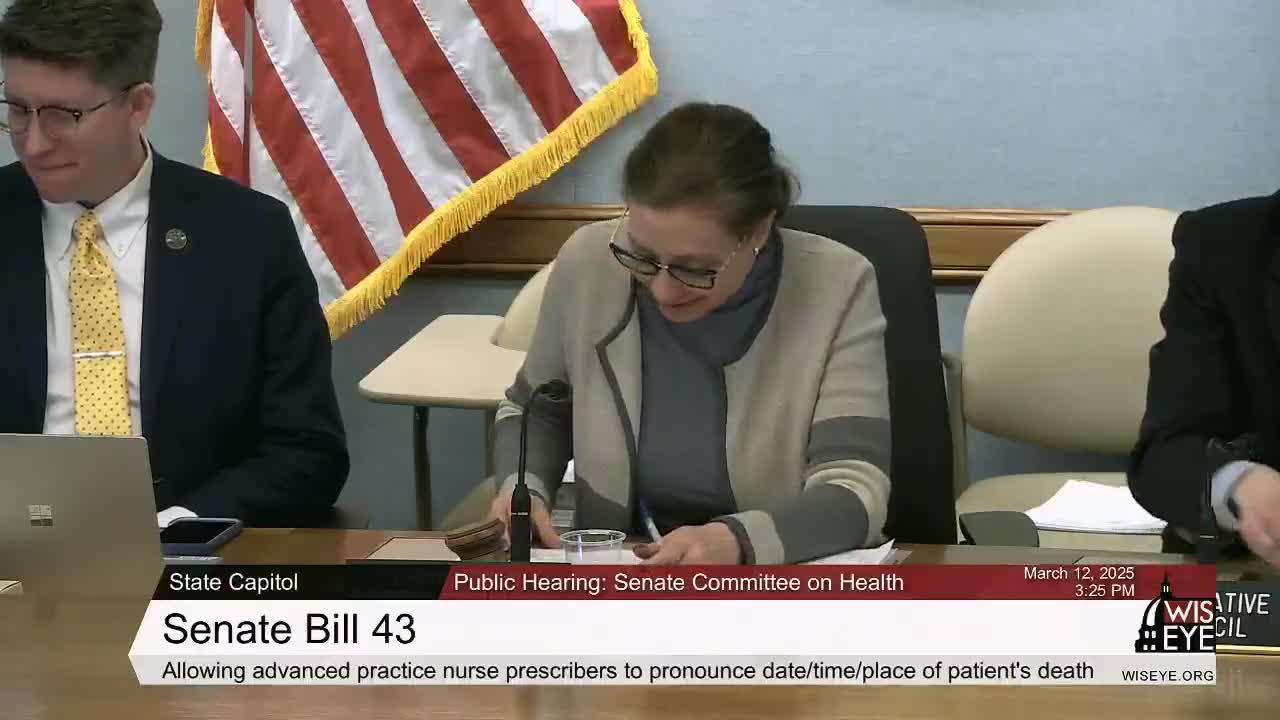Wisconsin Senate Committee supports SB 43 allowing nurse practitioners to pronounce death
This article was created by AI summarizing key points discussed. AI makes mistakes, so for full details and context, please refer to the video of the full meeting. Please report any errors so we can fix them. Report an error »

In a recent meeting of the Wisconsin Senate Committee on Health, lawmakers discussed Senate Bill 43, a proposal aimed at enhancing the efficiency of death record preparation in the state. The bill seeks to expand the authority of advanced practice nurse prescribers, including nurse practitioners, nurse anesthetists, nurse midwives, and clinical nurse specialists, to pronounce death. Currently, only physicians, physician assistants, and registered nurses in hospice care hold this responsibility.
Supporters of the bill, including representatives from the Wisconsin Nurses Association, emphasized that allowing nurse practitioners to pronounce death would streamline the process and provide timely support to grieving families. With 37 other states already permitting this practice, advocates argue that Wisconsin should follow suit to improve healthcare delivery, especially in rural and underserved areas where physician shortages are prevalent.
The discussion highlighted the qualifications of advanced practice nurses, who possess extensive training in patient assessment and end-of-life care. By enabling these professionals to pronounce death, the bill aims to alleviate some of the burdens on families during a difficult time, ensuring a smoother transition in the aftermath of a loved one's passing.
As the committee moves forward, the passage of Senate Bill 43 could mark a significant step in modernizing Wisconsin's healthcare practices, aligning the state with national standards and enhancing the role of nurse practitioners in patient care. The committee's decision will be closely watched by healthcare professionals and families alike, as it has the potential to impact the way end-of-life situations are managed across the state.
Supporters of the bill, including representatives from the Wisconsin Nurses Association, emphasized that allowing nurse practitioners to pronounce death would streamline the process and provide timely support to grieving families. With 37 other states already permitting this practice, advocates argue that Wisconsin should follow suit to improve healthcare delivery, especially in rural and underserved areas where physician shortages are prevalent.
The discussion highlighted the qualifications of advanced practice nurses, who possess extensive training in patient assessment and end-of-life care. By enabling these professionals to pronounce death, the bill aims to alleviate some of the burdens on families during a difficult time, ensuring a smoother transition in the aftermath of a loved one's passing.
As the committee moves forward, the passage of Senate Bill 43 could mark a significant step in modernizing Wisconsin's healthcare practices, aligning the state with national standards and enhancing the role of nurse practitioners in patient care. The committee's decision will be closely watched by healthcare professionals and families alike, as it has the potential to impact the way end-of-life situations are managed across the state.
View full meeting
This article is based on a recent meeting—watch the full video and explore the complete transcript for deeper insights into the discussion.
View full meeting